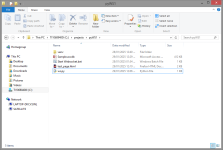Hi,
Is there anyway to get a form to refresh when a record is added to a table.
Basically I have a python program to get caller ID from incoming phone calls (Gave up trying with VBA Tapi) & it updates the db table via odbc.
Works great, table is updated but I have a form that just sits there & would love for it to automatically refresh when a call comes in.
Just discovered Table Macros, I suspect & cannot see the ability to interact with forms but is there something I have missed that could automatically trigger something that then be used to refresh a form.
I imagine a similar situation if a difference user was changing data on the back end, so not just my unusual use of an external odbc update.
Will use timer if I have too, but not keen, I don't know how resource hungry they are (I do use but on checking stuff once every few minutes or hours)
For this caller I will have checking every half second or perhaps quicker, call comes in I want to see almost immediately, need to just look & cannot be pressing a key to refresh.
Perhaps if no option, can you advise ifusing timer could be an issue?
Thanks I/A
Is there anyway to get a form to refresh when a record is added to a table.
Basically I have a python program to get caller ID from incoming phone calls (Gave up trying with VBA Tapi) & it updates the db table via odbc.
Works great, table is updated but I have a form that just sits there & would love for it to automatically refresh when a call comes in.
Just discovered Table Macros, I suspect & cannot see the ability to interact with forms but is there something I have missed that could automatically trigger something that then be used to refresh a form.
I imagine a similar situation if a difference user was changing data on the back end, so not just my unusual use of an external odbc update.
Will use timer if I have too, but not keen, I don't know how resource hungry they are (I do use but on checking stuff once every few minutes or hours)
For this caller I will have checking every half second or perhaps quicker, call comes in I want to see almost immediately, need to just look & cannot be pressing a key to refresh.
Perhaps if no option, can you advise ifusing timer could be an issue?
Thanks I/A

